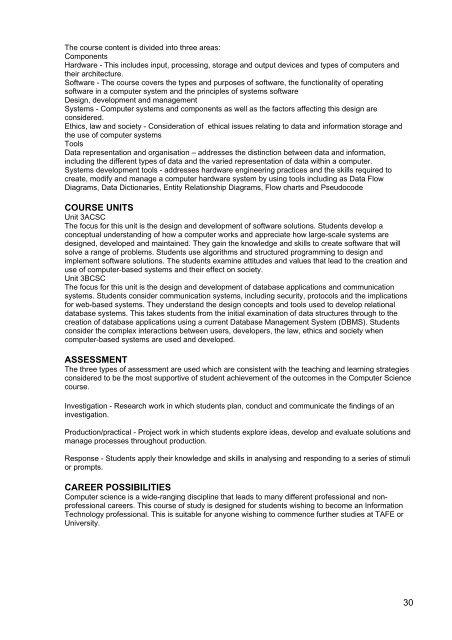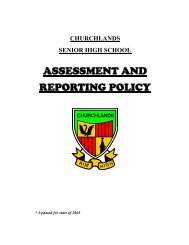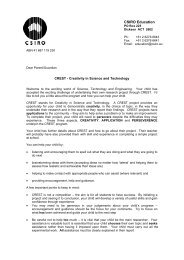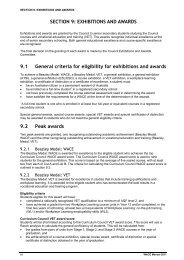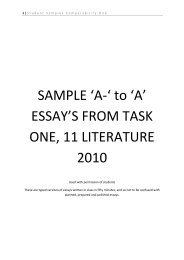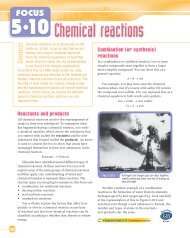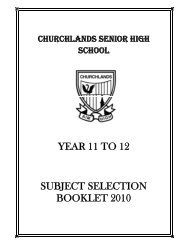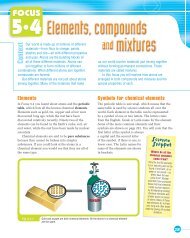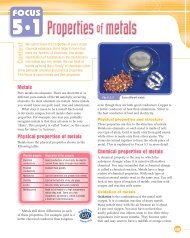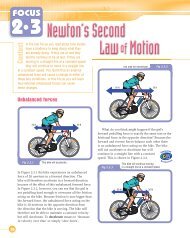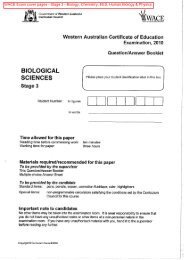3a/3b - Churchlands Senior High School
3a/3b - Churchlands Senior High School
3a/3b - Churchlands Senior High School
Create successful ePaper yourself
Turn your PDF publications into a flip-book with our unique Google optimized e-Paper software.
The course content is divided into three areas:ComponentsHardware - This includes input, processing, storage and output devices and types of computers andtheir architecture.Software - The course covers the types and purposes of software, the functionality of operatingsoftware in a computer system and the principles of systems softwareDesign, development and managementSystems - Computer systems and components as well as the factors affecting this design areconsidered.Ethics, law and society - Consideration of ethical issues relating to data and information storage andthe use of computer systemsToolsData representation and organisation – addresses the distinction between data and information,including the different types of data and the varied representation of data within a computer.Systems development tools - addresses hardware engineering practices and the skills required tocreate, modify and manage a computer hardware system by using tools including as Data FlowDiagrams, Data Dictionaries, Entity Relationship Diagrams, Flow charts and PseudocodeCOURSE UNITSUnit 3ACSCThe focus for this unit is the design and development of software solutions. Students develop aconceptual understanding of how a computer works and appreciate how large-scale systems aredesigned, developed and maintained. They gain the knowledge and skills to create software that willsolve a range of problems. Students use algorithms and structured programming to design andimplement software solutions. The students examine attitudes and values that lead to the creation anduse of computer-based systems and their effect on society.Unit 3BCSCThe focus for this unit is the design and development of database applications and communicationsystems. Students consider communication systems, including security, protocols and the implicationsfor web-based systems. They understand the design concepts and tools used to develop relationaldatabase systems. This takes students from the initial examination of data structures through to thecreation of database applications using a current Database Management System (DBMS). Studentsconsider the complex interactions between users, developers, the law, ethics and society whencomputer-based systems are used and developed.ASSESSMENTThe three types of assessment are used which are consistent with the teaching and learning strategiesconsidered to be the most supportive of student achievement of the outcomes in the Computer Sciencecourse.Investigation - Research work in which students plan, conduct and communicate the findings of aninvestigation.Production/practical - Project work in which students explore ideas, develop and evaluate solutions andmanage processes throughout production.Response - Students apply their knowledge and skills in analysing and responding to a series of stimulior prompts.CAREER POSSIBILITIESComputer science is a wide-ranging discipline that leads to many different professional and nonprofessionalcareers. This course of study is designed for students wishing to become an InformationTechnology professional. This is suitable for anyone wishing to commence further studies at TAFE orUniversity.30


